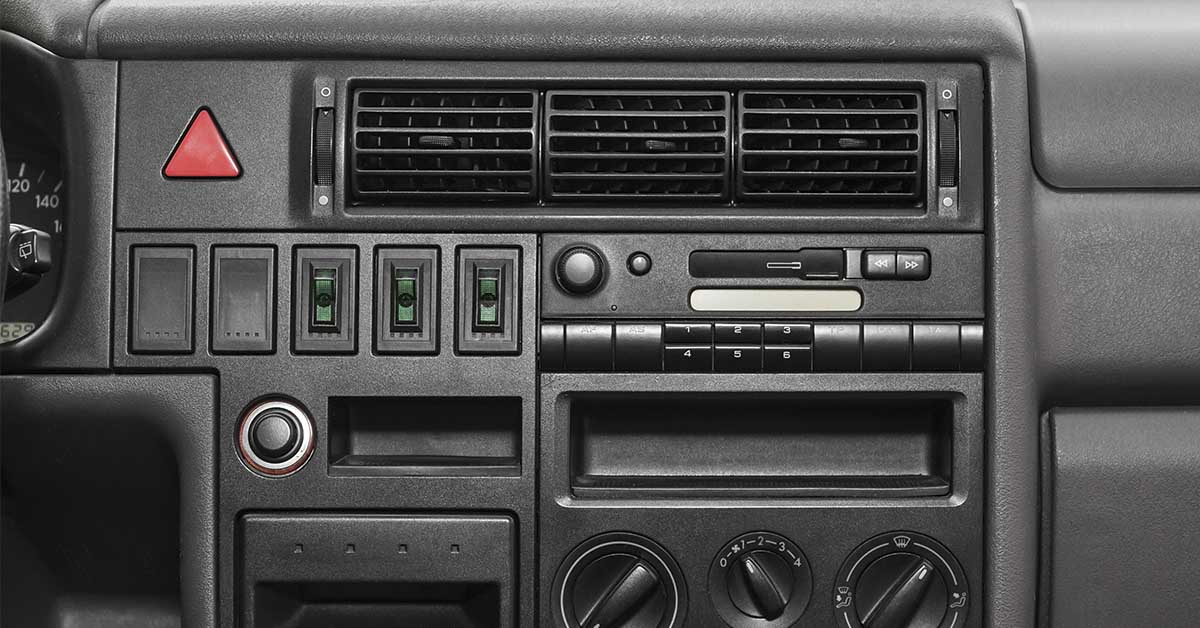In recent years, the automotive industry has been rapidly embracing digitization and touch screen technology. However, as the market has become saturated with these high-tech interfaces, automakers are now reversing course and reintroducing physical buttons and knobs into their vehicle designs¹. This shift in design philosophy can be attributed to a combination of factors, namely driver preferences and safety concerns.
The Problem
This push for a more visually appealing and futuristic interior comes at a cost. Touch-screen controls often require drivers to take their eyes off the road for longer periods of time², leading to an increased risk of accidents. A driver can be watching their screen for up to 40 seconds at a time – at 50mph that’s over a half mile of blind driving. Despite their names, touch screens require visual attention as much if not more than touch.
As a result, many drivers have expressed a preference for physical controls, which offer tactile feedback and allow them to keep their eyes on the road. According to the National Highway Traffic Safety Administration (NHTSA), drivers are recommended to use physical controls as they spend less time looking away from the road2 – and are therefore less likely to be involved in accidents.
A Mixed Response
Recognizing these concerns, automakers are starting to reintroduce physical buttons and knobs into their vehicle designs. Volkswagen, for example, will begin incorporating more traditional controls in their newest models. Porsche, owned by VW, is making a similar move, and Bugatti totes the record of “never having adopted touch screens.”
Nissan and Hyundai are among other car manufacturers that have decided to bring back buttons and knobs to their vehicle interiors. But this design shift is not just about safety and driver preferences. As the market becomes increasingly saturated with touch-screen technology, automakers must find ways to stand out. By reintroducing physical controls, they can differentiate their vehicles from competitors and offer a unique selling point to consumers who are looking for a more intuitive and tactile driving experience.
However, striking the right balance between futuristic looks and physical controls is essential. While some drivers may prefer traditional buttons and knobs, others still appreciate touch-screen interfaces’ sleek and modern look. As a result, automakers must continue innovating and exploring new ways to blend these technologies, offering all drivers a seamless and user-friendly experience.
In addition to the aforementioned automakers, other manufacturers have responded to the growing demand in the opposite way. GM, for instance, has maintained it will be doubling down on touch screens and that future models will be incompatible with CarPlay and Android Auto – making it even harder for drivers to seamlessly use the technology needed while also maintaining the lack of safety on the road.
Moving Forward
In conclusion, the automotive industry is undergoing a shift in design philosophy as (some) manufacturers recognize the importance of physical controls for both safety and user experience. While touch-screen technology may have been the industry’s darling for a time, the growing demand for buttons and knobs demonstrates that modern vehicles still have a place for traditional controls. As automakers continue to innovate, it will be fascinating to see how they balance the benefits of digital interfaces with the familiarity and safety offered by physical buttons and knobs. It is crucial for automakers to remain responsive to consumer preferences and demands.
In the case of touch screens, the initial excitement over their futuristic appearance and convenience has given way to a more practical realization that they may not always be the best solution for every driver or situation. The return of buttons and knobs in vehicle interiors signifies a growing understanding that sometimes, simpler and more reliable solutions can offer a more satisfying driving experience. The challenge now for automakers is to maintain the fine balance between incorporating new technologies and retaining the tried-and-tested features that drivers have come to appreciate.
Ultimately, the re-emergence of physical controls in modern cars serves as a reminder that technology should enhance the driving experience rather than detract from it. By carefully considering the advantages and disadvantages of touch screens and physical controls, automakers can ensure they are providing vehicles that cater to the diverse preferences and needs of their customers while also prioritizing safety and functionality.
Sources
- “Automakers Are Bringing Back Buttons and Knobs as Touch Screens Become Scourge for Drivers.” Good News Network. Andy Corbley. May 2, 2023.
- “The Glorious Return of a Humble Car Feature.” Slate. David Zipper. April 26, 2023.

